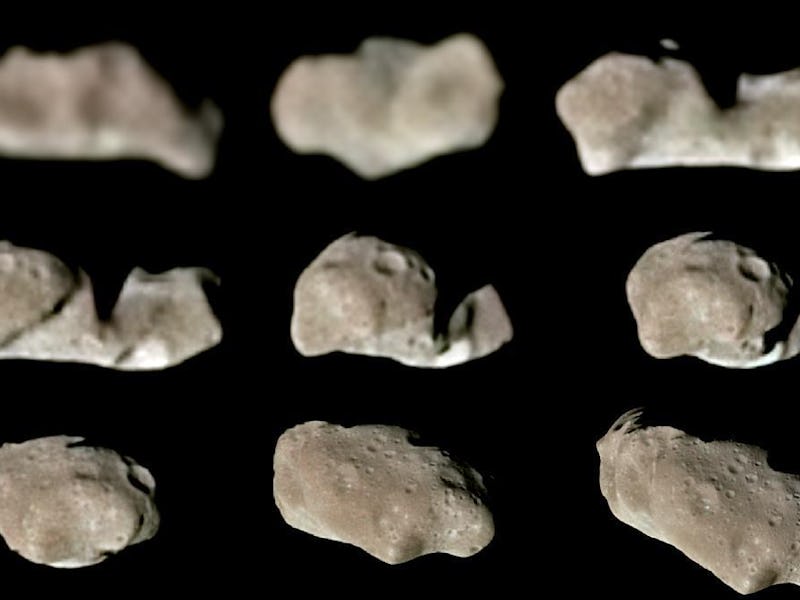Asteroids likely caused the dinosaur apocalypse, and if one hurtles into Earth, we’d probably die, too. But asteroids can be a lifesavers in outer space, by protecting us from space radiation.
In space, humans are prone to fatal radiation from galactic cosmic rays and solar energetic particles, and this is a major obstacle when it comes to deep-space missions. But in a study published Wednesday in Advances in Space Research, University of Central Florida researchers proposed that a shield made of asteroid clay would be a simple and effective way to protect astronauts.
As we prepare to go on more deep space missions, like a mission to Mars or settling on the moon, space radiation poses as a major health risk and can wreak havoc on the body. For example, it can increase the risk of cardiovascular problems, leukemia, and brain damage.
“The implication is extraterrestrial resources are a valid possibility in designing long-term habitats for exploration,” Dr. Daniel Britt, professor from University of Central Florida’s Department of Physics, tells Inverse. “We have a radiation environment we have to build for. If we have to spend more time in deep space, that’s something we’re going to plan for.”
With an asteroid clay shield to be used for space missions or space habitats, high-energy radiation particles can deposit their energy in the shield. Asteroid clay has up to 10 percent better shielding power than materials from the moon and even aluminium, which is currently used for shields during shorter missions.
“It’s kind of expensive to drag things off the surface of the Earth,” Britt says. “If you’re going to do exploration of Mars or the moon, it’s a good idea to use local resources, and one of the local resources are asteroids.”
Current aluminium shields are expensive and heavy. On the other hand, asteroid clay is rich in hydroxyls, the most effective material for shielding from cosmic rays and particles.
“For radiation shielding it’s a good idea to have low atomic mass elements,” Britt says. “They absorb moving neutrons better than things that have a lot of atomic mass.”
The next step would be figuring out how we’re going to mine asteroids for their clay. Scientists must locate the volatile-rich asteroids with the right kind of mineralogy. Once we locate those, one possibility is separating other materials in asteroids from clay by using large magnets, since clay is non-magnetic.
Besides mining for shield material, asteroids can be invaluable for water, building material, and fuel. Some countries, like the U.S. and Luxembourg, have already started plans to mine asteroids for resources.
“I think that it’s part of a discussion and the engineering possibilities for designing habitats in space and making it possible to use space resources,” Britt says. “These are studies that need to be done to move the science and engineering along in that direction.”
Abstract: Galactic Cosmic Rays (GCRs) and Solar Energetic Particles (SEPs) pose a serious limit on the duration of deep space human missions. A shield composed of a bulk mass of material in which the incident particles deposit their energy is the simplest way to attenuate the radiation. The cost of bringing the sufficient mass from the Earth’s surface is prohibitive. The shielding properties of asteroidal material, which is readily available in space, are investigated. Solution of Bethe’s equation is implemented for incident protons and the application in composite materials and the significance of various correction terms are discussed; the density correction is implemented. The solution is benchmarked and shows good agreement with the results in literature which implement more correction terms within the energy ranges considered. The shielding properties of CI and CM asteroidal taxonomy groups and major asteroidal minerals are presented in terms of stopping force. The results show that CI and CM chondrites have better stopping properties than Aluminium. Beneficiation is discussed and is shown to have a significant effect on the stopping power.
